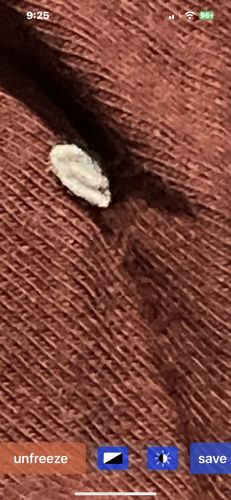Case-bearing Clothes Moth Larva
Scientific Name: Tinea pellionella
Order & Family: Lepidoptera, Tineidae
Size: Larvae grow up to 10-14 mm (0.4-0.55 inches) in length, pupae are about 6-7 mm (0.24-0.28 inches).

Natural Habitat
Indoors, particularly in dark, undisturbed areas where animal fibers (wool, fur, silk, feathers) are stored, such as closets, attics, and storage chests.
Diet & Feeding
Keratin-containing materials, including wool, fur, feathers, hair, silk, felt, and sometimes synthetic fibers if mixed with natural ones. They feed on animal-derived fabrics and items.
Behavior Patterns
The larva constructs a silk case incorporating fibers from the material it feeds on, carrying this case with it as it moves and grows. It retracts into the case when disturbed. Development can take several weeks to years depending on environmental conditions (temperature, humidity, food availability). Adults are small, shiny, grayish-brown moths that are nocturnal and generally poor flyers, preferring to run or hop. The adults do not feed.
Risks & Benefits
Risks: Significant economic pest of stored textiles, furs, and other animal-derived products, causing damage to clothing, carpets, upholstery, and museum collections. Benefits: None known for this species from a human perspective; they are considered purely a pest of stored products.
Identified on: 9/16/2025